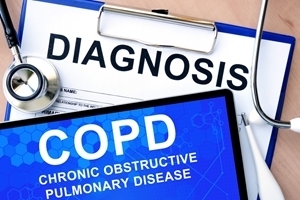One of the primary goals of physical therapy jobs is to improve a patient's quality of life. With the right exercise and rehabilitation regimen, you can help folks with just about any condition. More recently, research has supported the use of physical therapy for people with chronic obstructive pulmonary disease, or COPD. Learn more about how physical therapy can benefit these individuals:
A current look at COPD
According to the National Institutes of Health, COPD is a serious and progressive disease that causes breathing difficulties. The condition, which often is marked by coughing and shortness of breath, can be brought on by a number of underlying causes, such as the lung's air sacs losing elasticity or inflammation of the bronchial tubes. COPD is often caused by smoking but it can stem from being exposed to air contamination like dust or pollution.
Because it gets worse over time, COPD has varying stages, and people may not realize they have it until later in life. Currently, it affects millions of people across America and serves as one of the leading cause of death in the U.S.
Beyond increasing mortality rates, the disease limits a person's ability to perform everyday tasks. With COPD, people can't always enjoy the same physical activities they once did. Long-time basketball players must sit on the sidelines and dancers watch others twirl to tunes from afar. That's because COPD affects more than breathing – it can lead to nutritional problems, decreased strength and difficulty with balance.
As the American Physical Therapy Association explained, physical therapists can help those with COPD get back to a more fulfilling lifestyle be improving their exercise capacity and overall strength.
Research supports physical therapy for COPD patients
A study published in September 2015 in COPD: Journal of Chronic Obstructive Pulmonary Disease reviewed the effects of physical therapy on COPD patients. These patients were also obese and undergoing hospital stays. Led by researchers from the University of Granada and the Virgen de las Nieves Hospital in Granada, the program split 49 of these patients into two groups: one received intervention while the other did not.
The regimen was short, just seven to 10 days in length, but it yielded significant outcomes for participants. Specifically, those that received the physical therapy intervention experienced improved lower limb strength and greater exercise capacity.
Physical therapy in practice for COPD patients
In the September 2015 study, researchers used exercises that focused on the lower limbs, with regimens that called on elastic bands, pedaling and balancing, according to Medical Xpress. During your travel therapy assignments, you can use these tactics and more when working with COPD patients.
An initial patient assessment is a crucial first step. According to the APTA, you must consider environmental factors that may have contributed to the patient's COPD, like smoking. Physical therapists must then review medications and determine if certain activities exacerbate symptoms. You also have to evaluate bodily strength, balance and exercise capacity. This latter step can be done through tactics like constant work rate test and sit-to-stand tests.
Based on those findings, you then create a program that best fits the patient's needs. Research published in the journal European Respiratory Review offered several suggestions for this essential step. For instance, you can apply endurance training in your regimen, which physical therapists often use for COPD patients. Here, aerobics is key, but it is vital to limit intensity, especially for patients with severe COPD.
Cycle-based training is also a great option, and may even be more impactful than walking. As the study explained, walking elicits a more significant ventilatory response, so cycling is generally easier for COPD patients.
The regimen should also incorporate strength exercise, and resistance training is often the preferred method. Researchers from the University of Granada and the Virgen de las Nieves Hospital in Granada used elastics bands, which target specific groups and can even be used at home. As always, just be sure to teach proper execution so patients can avoid injury while exercising on their own.
Working in physical therapy jobs, you have the incredible opportunity to enhance people's quality of life. Do this for COPD patients by being prepared to develop their unique treatment plans.


Realy an useful one . thank you